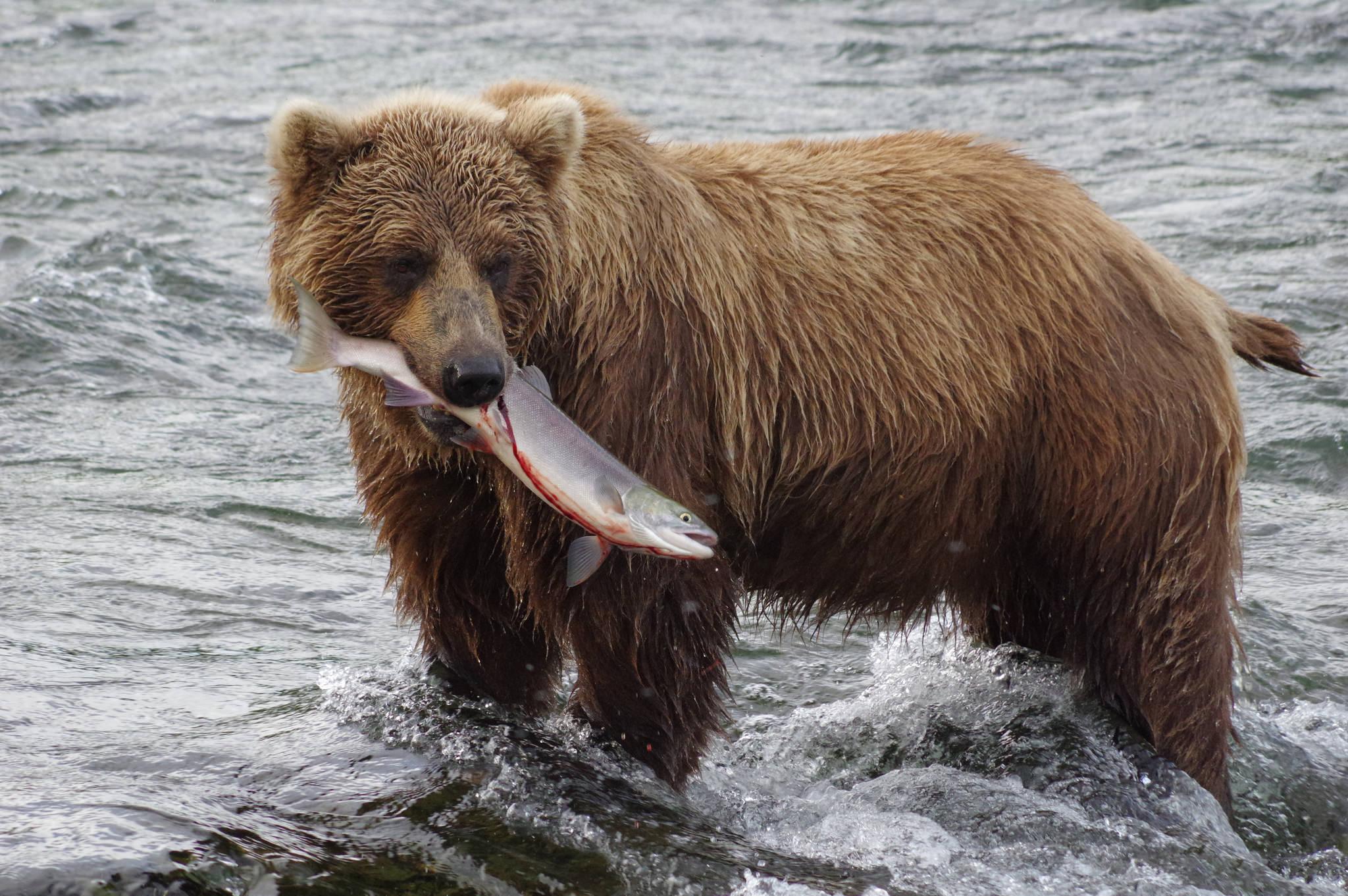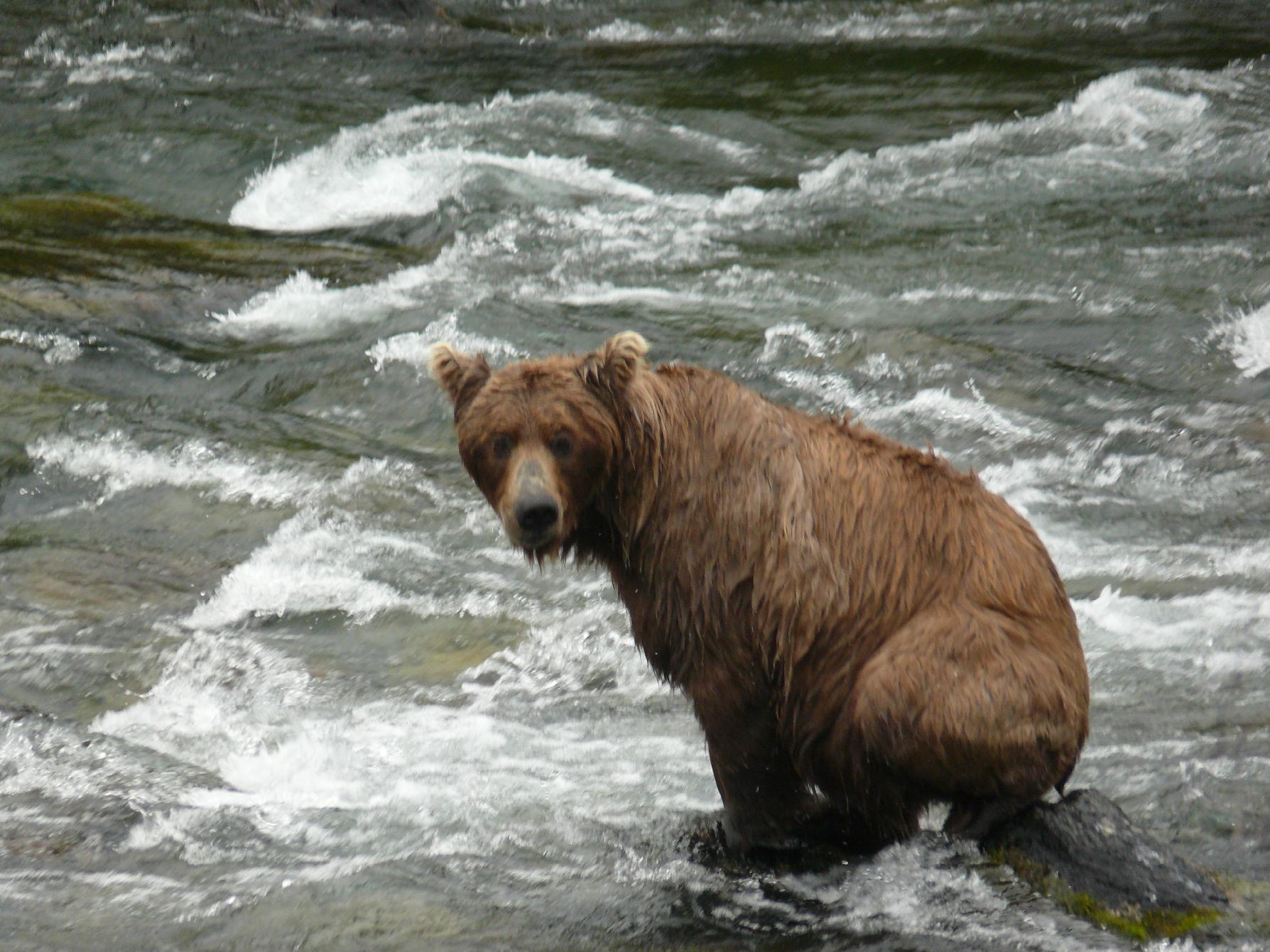In this blog post we’ll delve into the technical development of a bear face segmentation system which is a critical component of the bear identification system developed in close collaboration with the BearID Project NGO.
Our research and software tool will provide a replicable technique and general approach that can be applied to other species beyond bears, which could aid conservation efforts worldwide.
– BearID Project
For a comprehensive understanding of this project, please click on the pipeline overview below:

Project Scope
While many species boast distinctive fur patterns for identification, brown bears lack consistent and unique markings. Furthermore, their weight can fluctuate significantly between seasons and throughout their lifetimes. Consequently, facial recognition emerges as a valuable alternative for individual identification.
In this article, our focus lies on the initial stage of the bear identification system, which involves bear face instance segmentation.
 Bear Face Instance Segmentation
Bear Face Instance Segmentation
The computer vision model responsible for localizing and segmenting bear faces must operate with high accuracy. Consistency in providing the system with accurate bear face data is crucial for the development of a robust bear face identification system.
Provided Dataset
The BearID Project has compiled a collection of approximately 3400 bear images, showcasing their facial features, captured over recent years in forests across British Columbia and Brooks Falls.




Exploratory Data Analysis
Exploratory Data Analysis (EDA) is an approach to analyzing datasets to summarize their main characteristics, often employing visual methods. The primary goal of EDA is to uncover patterns, relationships, and anomalies in the data, which can then inform subsequent analysis or modeling tasks.
EDA typically involves the following steps:
- Data Collection: Gathering the relevant dataset(s) from various sources.
- Data Cleaning: Identifying and handling missing values, outliers, and inconsistencies in the data.
- Summary Statistics: Computing descriptive statistics such as mean, median, mode, standard deviation, etc., to understand the central tendencies and variability of the data.
- Data Visualization: Creating visual representations of the data using plots, charts, histograms, scatter plots, etc., to explore patterns, distributions, correlations, and trends within the data.
- Exploratory Modeling: Building simple models or using statistical techniques to further understand relationships within the data.
- Hypothesis Testing: Formulating and testing hypotheses about the data to validate assumptions or gain insights.
- Iterative Analysis: Iteratively exploring the data, refining analysis techniques, and generating new hypotheses as insights emerge.
EDA is a crucial initial step in any data analysis or modeling project as it helps analysts gain a deeper understanding of the dataset, identify potential challenges or biases, and inform subsequent analytical decisions. It provides a foundation for more advanced analyses, such as predictive modeling, hypothesis testing, or machine learning, by guiding feature selection, model building, and evaluation strategies.
Data quality issues
Inaccurate bounding boxes and facial landmarks
Each bear image is accompanied by the following labels:
- Bear identification string: such as Amber, Beatrice, Bella, etc.
- Bounding boxes outlining bear heads.
- Facial landmarks: including the left eye, right eye, nose, mouth, left ear, and right ear.


The provided bounding boxes and facial landmarks, generated by the Dlib library, may not always be highly accurate. Further information about the development process and its backstory can be found here.
Bursts of images
When encountering a bear, photographs or camera traps often capture multiple images of the same individual in very similar poses. Proper handling of these bursts of images during data splitting is crucial. Neglecting this step may lead to train/test data leakage, which can cause the model to inaccurately overreport its performance.




Data Annotation
Bounding Boxes
To effectively train a bear face segmentation model, we first require high quality bounding boxes for each provided image.
During this stage, we evaluated several options for generating bear bounding boxes, including Roboflow and GroundingDINO.
Manual Annotations - Roboflow
To facilitate the relabeling of the bear dataset, we utilized Roboflow, a platform designed to streamline the labeling process. The labeling task was delegated to a team of four annotators, each provided with clear instructions on how to accurately segment a bear’s face.
Adjust the bounding box to accurately encompass the entire bear head, ensuring it covers both ears, the nose and the mouth. Strive for a compact bounding box that encapsulates the complete head and fur while minimizing unnecessary space.
Labeling Instrunctions
 Gallery / Roboflow annotation session
Gallery / Roboflow annotation session
GroundingDINO
 GroundingDINO is a multimodal framework that combines Vision
Transformers (ViTs) with language grounding for image-text matching tasks. It
leverages the power of transformer-based models for both image and text
modalities, enabling efficient processing of visual and textual information. By
grounding textual descriptions with visual features, GroundingDINO achieves
improved performance in tasks such as image retrieval and cross-modal
understanding.
GroundingDINO is a multimodal framework that combines Vision
Transformers (ViTs) with language grounding for image-text matching tasks. It
leverages the power of transformer-based models for both image and text
modalities, enabling efficient processing of visual and textual information. By
grounding textual descriptions with visual features, GroundingDINO achieves
improved performance in tasks such as image retrieval and cross-modal
understanding.
was employed to assess the accuracy of GroundingDINO-generated bounding boxes.
A histogram illustrating the distribution of IoU scores was generated. Remarkably, 95% of GroundingDINO’s predictions exhibited an IoU greater than 68%, indicating its proficiency in localizing bear faces
 GroundingDINO IoU Evaluation / Green bboxes are manual labels while red bboxes
are generated by GDINO
GroundingDINO IoU Evaluation / Green bboxes are manual labels while red bboxes
are generated by GDINO
In future projects akin to this one, the labor-intensive task of manually labeling bounding boxes around bear faces could potentially be automated using tools akin to GroundingDINO, given its demonstrated high accuracy.
Segmentation Masks with SAM
To effectively train a bear face segmentation model, we require a segmentation mask for each provided image. The relabeled bounding boxes represent the initial step toward obtaining segmented bear heads.
The Segment Anything Model (SAM) produces high quality object masks from input prompts such as points or boxes, and it can be used to generate masks for all objects in an image. It has been trained on a dataset of 11 million images and 1.1 billion masks, and has strong zero-shot performance on a variety of segmentation tasks.
 SAM Github / SAM output example
SAM Github / SAM output example
We utilized a subset of the provided facial landmarks to instruct SAM in segmenting the complete bear bodies. Our assessment revealed that using the three facial landmarks—nose, left eye, and right eye—proved accurate enough to generate high-quality bear body masks.
 Prompting SAM with facial landmarks to segment bear bodies
Prompting SAM with facial landmarks to segment bear bodies
The image below summarized the approach taken to generate the bear segmented heads combining bounding boxes and SAM.
 Generating Bear Face Masks combining bboxes and SAM
Generating Bear Face Masks combining bboxes and SAM
Data Modeling
Data Split
To mitigate the risk of train/test data leakage caused by the bursts of images mentioned earlier, we identified two straightforward options for conducting the data split: either by date or by individual.
Instance Segmentation
The task at hand is now framed as an instance segmentation problem, where the model is tasked with learning to identify and outline bear faces within input images.
But what exactly is instance segmentation? Let’s say you have a picture of a park filled with people, trees, and benches. While basic object detection recognizes these elements, instance segmentation takes it a step further. It not only identifies the presence of people, trees, and benches but also discerns each individual instance of these objects. For example, if there are three people in the park photo, instance segmentation will label and outline each person separately. This detailed segmentation enables the computer to not only recognize what objects are in the image but also precisely locate each instance of those objects.
Evaluation Metrics
To evaluate the performance of our model, we are monitoring the following metrics across multiple training runs on both the train and validation sets:
- Box(P, R, mAP50, mAP50-95): This metric provides insights into the model’s performance in detecting objects:
- Mask(P, R, mAP50, mAP50-95): This metric provides insights into the
model’s performance in segmenting objects:
- P (Precision): The accuracy of the segmented objects, indicating how many detections were correct.
- R (Recall): The ability of the model to identify all instances of objects in the images.
- mAP50: Mean average precision calculated at an intersection over union (IoU) threshold of 0.50. It’s a measure of the model’s accuracy considering only the “easy” detections.
- mAP50-95: The average of the mean average precision calculated at varying IoU thresholds, ranging from 0.50 to 0.95. It gives a comprehensive view of the model’s performance across different levels of detection difficulty.
Further documentation is available here.
YOLOv8
Overview
We opted to utilize a pretrained YOLOv8 model and fine-tune it for our specific instance segmentation task. Renowned for its speed, accuracy, and user-friendly interface, YOLOv8 stands out as an ideal solution for various tasks, including object detection, tracking, instance segmentation, image classification, and pose estimation.
 YOLOv8 Computer Vision Tasks
YOLOv8 Computer Vision Tasks
Training
After initially training a baseline model for a few epochs on the dataset, we selected a model size of ’nano’ and fine-tuned it for 40 epochs using the default augmentation settings provided by the YOLOv8 framework.

Evaluation
We analyze the precision-recall curve on the test set to evaluate the model’s performance objectively. Additionally, we examine the predicted masks to qualitatively assess the model’s performance.
 Quantitative Results / Precision Recall Curve
Quantitative Results / Precision Recall Curve
 Qualitative Results / Samples of Predicted Masks
Qualitative Results / Samples of Predicted Masks
Thus, the fine-tuned YOLOv8 model showcases exceptional accuracy in bear face instance segmentation, laying the foundation for a robust bear identification system.
Conclusion
The state-of-the-art instance segmentation model, tailored specifically for segmenting bear faces from images, establishes a robust foundation for a bear identification system. This adaptable approach can be extended to various species and holds promising potential for advancing conservation efforts.
 Segmented bear faces by the ML model
Segmented bear faces by the ML model





